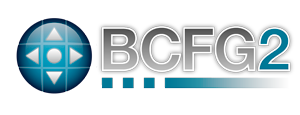
Genshi’s XML templating language is used in Bundler for templated bundles. The language is described in depth at Genshi. The XML schema reference follows.
Most Genshi templating directives can be used either as standalone elements or as attributes on existing elements. This element group defines the standalone tags.
| Name | Description | Values | Required | Default |
|---|---|---|---|---|
| py:vars |
|
string | Yes | None |
Any arbitrary child elements allowed
| Name | Description | Values | Required | Default |
|---|---|---|---|---|
| py:value |
|
string | Yes | None |
Any arbitrary child elements allowed
| Name | Description | Values | Required | Default |
|---|---|---|---|---|
| py:test |
|
string | No | None |
The when directive is used inside py:chooseType or choose to handle a single specific condition.
Name |
Description |
Values |
Required |
Default |
|---|---|---|---|---|
py:test |
|
Yes |
None |
Any arbitrary child elements allowed
Any
Any arbitrary child elements allowed
Any
| Name | Description | Values | Required | Default |
|---|---|---|---|---|
| py:each |
|
string | Yes | None |
Any arbitrary child elements allowed
| Name | Description | Values | Required | Default |
|---|---|---|---|---|
| py:test |
|
string | Yes | None |
Any arbitrary child elements allowed
| Name | Description | Values | Required | Default |
|---|---|---|---|---|
| py:path |
|
string | Yes | None |
| py:buffer |
|
true | false | No | true |
| py:once |
|
true | false | No | false |
| py:recursive |
|
true | false | No | true |
Any arbitrary child elements allowed
Most Genshi templating directives can be used either as standalone elements or as attributes on existing elements. This attribute group defines the attribute directives.
| Name | Description | Values | Required | Default |
|---|---|---|---|---|
| py:attrs | string | No | None | |
| py:choose | string | No | None | |
| py:content | string | No | None | |
| py:def | string | No | None | |
| py:for | string | No | None | |
| py:if | string | No | None | |
| py:match | string | No | None | |
| py:otherwise |
|
string | No | None |
| py:replace | string | No | None | |
| py:strip | string | No | None | |
| py:when | string | No | None | |
| py:with | string | No | None |